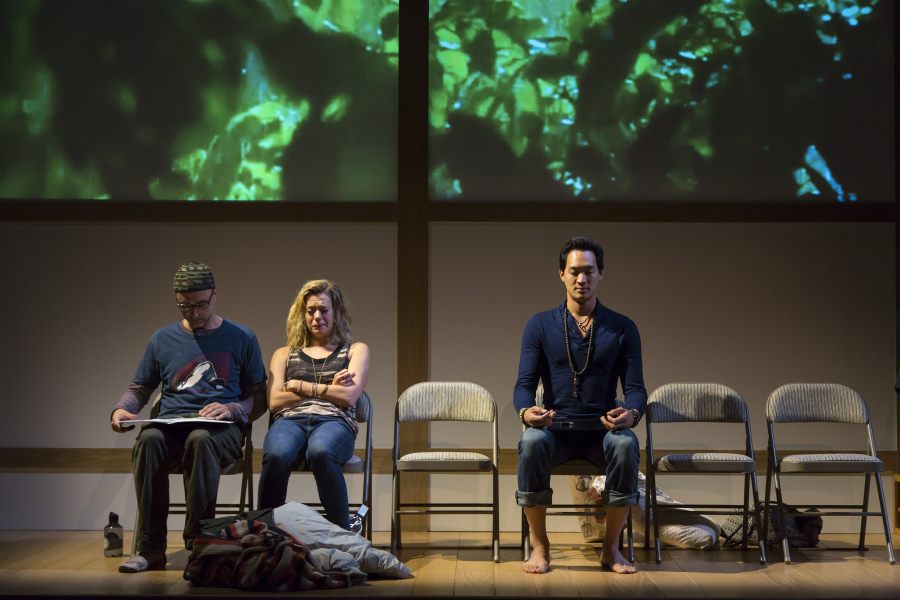This month Small Mouth Sounds by Bess Wohl begins its national tour at New Haven, Conn.’s Long Wharf Theatre (Aug. 30-Sept. 24). It will also touch down in San Francisco, Santa Monica, Dallas, Miami, and Philadelphia. The Obie-winning play, directed by Rachel Chavkin, began at Ars Nova’s Off-Broadway space. In it, six strangers go on a silent retreat. And true to the premise, there’s almost no speaking for the entire play, save for a few key monologues by an offstage guru.
So the job of sound designer Stowe Nelson was to fill that wordless space. Small Mouth Sounds opens with “a giant rainstorm,” he explains. “It’s very, very loud. It kind of, forgive the metaphor, washes away a lot of things and you land on the other side of it and all of a sudden, you realize it is really quiet in here. We’ve messed with your level of perception in the first sequence of the play. We continue to do that throughout, by waking your brain up and making sure you notice how quiet it is.”
In the original staging, which was done avenue-style, the nature sounds immersed the audience in the environment, as if they were also guests of the retreat. Those sounds would increase and decrease in volume as the scenes shifted and as the characters moved inside and outside. “We’re trying to recreate what it feels like to be in this location,” explains Nelson. “We’re trying to make sure we maintain some version of the environmental sound when we go indoors.”
Nelson admits that unlike at Ars Nova, the staging for the touring production will be proscenium, so it will have a “slightly less immersive feel.” Instead, it will feel like “it happens on the stage where the actors are. And at some point the wall will break and the whole sound design will spill out into the audience and recede back in,” surmises Nelson, a month before the first preview at Long Wharf. But no matter the staging, the point for Nelson is this: “The more we can fill up the world, the more you realize they’re not talking: I have to listen and watch with an attention that the theatre doesn’t always require of it. That’s a really fun and exciting way to make a play.”


